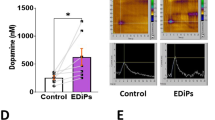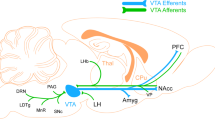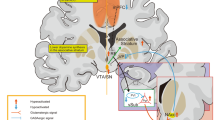Abstract
Since the original formulation of the dopamine hypothesis, a number of other cellular-level abnormalities—eg, NMDA receptor hypofunction, GABA system dysfunction, neural connectivity disturbances—have been identified in schizophrenia, but the manner in which these potentially interact with hyperdopaminergia to lead to schizophrenic symptomatology remains uncertain. Previously, we created a neuroanatomically detailed, biophysically realistic computational model of hippocampus in the control (unaffected) and schizophrenic conditions, implemented on a 72-processor supercomputer platform. In the current study, we apply the effects of dopamine (DA), dose-dependently, to both models on the basis of an exhaustive review of the neurophysiologic literature on DA’s ion channel and synaptic level effects. To index schizophrenic behavior, we use the specific inability of the model to attune to the 40 Hz (gamma band) frequency, a finding that has been well replicated in the clinical electroencephalography (EEG) and magnetoencephalography literature. In trials using 20 ‘simulated patients’, we find that DA applied to the control model produces modest increases in 40 Hz activity, similar to experimental studies. However, in the schizophrenic model, increasing DA induces a decrement in 40 Hz resonance. This modeling work is significant in that it suggests that DA’s effects may vary based on the neural substrate on which it acts, and—via simulated EEG recordings—points to the neurophysiologic mechanisms by which this may occur. We also feel that it makes a methodological contribution, as it exhibits a process by which a large amount of neurobiological data can be integrated to run pharmacologically relevant in silico experiments, using a systems biology approach.
Similar content being viewed by others
Log in or create a free account to read this content
Gain free access to this article, as well as selected content from this journal and more on nature.com
or
References
Abi-Dargham A, Rodenhiser J, Printz D, Zea-Ponce Y, Gil R, Kegeles LS et al (2000). Increased baseline occupancy of D2 receptors by dopamine in schizophrenia. Proc Natl Acad Sci USA 97: 8104–8109.
Albrecht MA, Price G, Lee J, Iyyalol R, Martin-Iverson MT (2013). Dexamphetamine selectively increases 40 Hz auditory steady state response power to target and nontarget stimuli in healthy humans. J Psychiatry Neurosci 38: 24–32.
Barr MS, Farzan F, Arenovich T, Chen R, Fitzgerald PB, Daskalakis ZJ (2011). The effect of repetitive transcranial magnetic stimulation on gamma oscillatory activity in schizophrenia. PLoS One 6: e22627.
Beaulieu JM, Gainetdinov RR (2011). The physiology, signaling, and pharmacology of dopamine receptors. Pharmacol Rev 63: 182–217.
Cantrell A, Smith R, Goldin A, Scheuer T, Catterall W (1997). Dopaminergic modulation of sodium current in hippocampal neurons via cAMAP-dependent phosphorylation of specific sites in the sodium channel alpha subunit. J Neurosci 17: 7330–7338.
Castro NG, de Mello MC, de Mello FG, Aracava Y (1999). Direct inhibition of the N-methyl-D-aspartate receptor channel by dopamine and (+)-SKF38393. Br J Pharmacol 126: 1847–1855.
Colgin LL, Moser EI (2010). Gamma oscillations in the hippocampus. Physiology 25: 319–329.
Court JA, Lloyd S, Thomas N, Piggott MA, Marshall EF, Morris CM et al (1998). Dopamine and nicotinic receptor binding and the levels of dopamine and homovanillic acid in human brain related to tobacco use. Neuroscience 87: 63–78.
De Keyser J (1993). Subtypes and localization of dopamine receptors in human brain. Neurochem Int 22: 83–93.
Dong Y, White FJ (2003). Dopamine D1-class receptors selectively modulate a slowly inactivating potassium current in rat medial prefrontal cortex pyramidal neurons. J Neurosci 23: 2686–2695.
Durstewitz D, Seamans JK, Sejnowski TJ (2000). Dopamine-mediated stabilization of delay-period activity in a network model of prefrontal cortex. J Neurophysiol 83: 1733–1750.
Gandal MJ, Edgar JC, Klook K, Siegel SJ (2012). Gamma synchrony: towards a translational biomarker for the treatment-resistant symptoms of schizophrenia. Neuropharmacology 62: 1504–1518.
Gangarossa G, Longueville S, De Bundel D, Perroy J, Herve D, Girault JA et al (2012). Characterization of dopamine D1 and D2 receptor-expressing neurons in the mouse hippocampus. Hippocampus 22: 2199–2207.
Gasbarri A, Sulli A, Packard MG (1997). The dopaminergic mesencephalic projections to the hippocampal formation in the rat. Prog Neuropsychopharmacol Biol Psychiatry 21: 1–22.
Gasbarri A, Verney C, Innocenzi R, Campana E, Pacitti C (1994). Mesolimbic dopaminergic neurons innervating the hippocampal formation in the rat: a combined retrograde tracing and immunohistochemical study. Brain Res 668: 71–79.
Gattaz WF, Riederer P, Reynolds GP, Gattaz D, Beckmann H (1983). Dopamine and noradrenalin in the cerebrospinal fluid of schizophrenic patients. Psychiatry Res 8: 243–250.
Geerts H, Roberts P, Spiros A (2013). A quantitative system pharmacology computer model for cognitive deficits in schizophenia. CPT: Pharmacometrics Syst Pharmacol 2: e36.
Grace AA . Personal communication, (2011).
Guillin O, Abi-Dargham A, Laruelle M (2007). Neurobiology of dopamine in schizophrenia. Int Rev Neurobiol 78: 1–39.
Hall H, Farde L, Sedvall G (1988). Human dopamine receptor subtypes—in vitro binding analysis using 3H-SCH 23390 and 3H-raclopride. J Neural Transm 73: 7–21.
Hoffman RE, McGlashan TH (2003). Schizophrenia: from psychodynamic to neurodynamic theories. In: Sadock JS, Sadock VA, (eds). Kaplan and Sadock’s Synopsis of Psychiatry 9th edn (Vol 1). Lippincott Williams and Wilkins: Philadelphia, PA.
Hong LE, Summerfelt A, McMahon R, Adami H, Francis G, Elliott A et al (2004a). Evoked gamma band synchronization and the liability for schizophrenia. Schizophr Res 70: 293–302.
Hong LE, Summerfelt A, McMahon RP, Thaker GK, Buchanan RW (2004a). Gamma/beta oscillation and sensory gating deficit in schizophrenia. Neuroreport 15: 155–159.
Howes OD, Kambeitz J, Kim E, Stahl D, Slifstein M, Abi-Dargham A et al (2012). The nature of dopamine dysfunction in schizophrenia and what this means for treatment. Arch Gen Psychiatry 69: 776–786.
Howes OD, Montgomery AJ, Asselin MC, Murray RM, Grasby PM, McGuire PK (2007). Molecular imaging studies of the striatal dopaminergic system in psychosis and predictions for the prodromal phase of psychosis. Br J Psychiatry Suppl 51: s13–s18.
Javitt D, Spencer K, Thaker G, Winterer G, Hajos M (2008). Neurophysiological biomarkers for drug development in schizophrenia. Nat Rev Drug Discov 7: 68–83.
Kenakin T (1997) Pharmacologic Analysis of Drug-Receptor Interaction. Lippincott-Raven: New York.
Komek K, Bard Ermentrout G, Walker CP, Cho RY (2012). Dopamine and gamma band synchrony in schizophrenia—insights from computational and empirical studies. Eur J Neurosci 36: 2146–2155.
Laruelle M, Abi-Dargham A (1999). Dopamine as the wind of the psychotic fire: new evidence from brain imaging studies. J Psychopharmacol 13: 358–371.
Laruelle M, Abi-Dargham A, Gil R, Kegeles L, Innis R (1999). Increased dopamine transmission in schizophrenia: relationship to illness phases. Biol Psychiatry 46: 56–72.
Lieberman JA, Kane JM, Alvir J (1987). Provocative tests with psychostimulant drugs in schizophrenia. Psychopharmacology 91: 415–433.
Lisman J, Coyle J, Green R, Javitt D, Benes F, Heckers S et al (2008). Circuit-based framework for understanding neurotransmitter and risk gene interactions in schizophrenia. Trends Neurosci 31: 234–242.
Liu F, Wan Q, Pristupa ZB, Yu X, Wang YT, Niznik HB (2000). Direct protein-protein coupling enables cross-talk between dopamine D5 and gamma-aminobutyric acid A receptors. Nature 403: 274–280.
Miyake N, Thompson J, Skinbjerg M, Abi-Dargham A (2011). Presynaptic dopamine in schizophrenia. CNS Neurosci Ther 17: 104–109.
Nunez PL (1981) Electric Fields of the Brain: The Neurophysics of EEG. Oxford University Press: New York, 484 pp.
Pedarzani P, Storm JF (1995). Dopamine modulates the slow Ca(2+)-activated K+ current IAHP via cyclic AMP-dependent protein kinase in hippocampal neurons. J Neurophysiol 74: 2749–2753.
Santesso DL, Evins AE, Frank MJ, Schetter EC, Bogdan R, Pizzagalli DA (2009). Single dose of a dopamine agonist impairs reinforcement learning in humans: evidence from event-related potentials and computational modeling of striatal-cortical function. Hum Brain Mapp 30: 1963–1976.
Satake T, Mitani H, Nakagome K, Kaneko K (2008). Individual and additive effects of neuromodulators on the slow components of afterhyperpolarization currents in layer V pyramidal cells of the rat medial prefrontal cortex. Brain Res 1229: 47–60.
Sataki T, Mitani H, Nakagome K, Kaneko K (2008). Individual and additive effects of neuromodulators on the slow components of afterhyperpolarizaiton currents in layer V pyramidal cells of the rat medial prefrontal cortex. Brain Res 1229: 47–60.
Siekmeier PJ, Vanmaanen DP (2013). Development of antipsychotic medications with novel mechanisms of action based on computational modeling of hippocampal neuropathology. PLoS One 8: e58607.
Spencer KM, Salisbury DF, Shenton ME, McCarley RW (2008). Gamma-band auditory steady-state responses are imparied in first episode psychosis. Biol Psychiatry 64: 369–375.
Surmeier D, Bargas J, Hemmings H, Nairn A, Greengard P (1995). Modulation of calcium currents by a D1 dopaminergic protein kinase/phosphatase cascade in rat neostriatal neurons. Neuron 14: 385–397.
Tiberi M, Caron MG (1994). High agonist-independent activity is a distinguishing feature of the dopamine D1B receptor subtype. J Biol Chem 269: 27925–27931.
Traub RD, Jefferys JG, Miles R, Whittington MA, Toth K (1994). A branching dendritic model of a rodent CA3 pyramidal neurone. J Physiol 481: 79–95.
Traub RD, Miles R (1995). Pyramidal cell-to-inhibitory cell spike transduction explicable by active dendritic conductances in inhibitory cell. J Comput Neurosci 2: 291–298.
Traub RD, Whittington MA, Buhl EH, Jefferys JGR, Faulkiner HJ (1999). On the mechanism of the gamma-beta frequency shift in neuronal oscillations induced in rat hippocampal slices by tetanic stimulation. J Neurosci 19: 1088–1105.
Uhlhaas PJ, Singer W (2010). Abnormal neural oscillations and synchrony in schizophrenia. Nat Rev Neurosci 11: 100–113.
Vierling-Claassen D, Siekmeier P, Stufflebeam S, Kopell N (2008). Modeling GABA alterations in schizophrenia: a link between impaired inhibition and altered gamma and beta range auditory entrainment. J Neurophysiol 99: 2656–2671.
Watanabe M, Kodama T, Hikosaka K (1997). Increase of extracellular dopamine in primate prefrontal cortex during a working memory task. J Neurophysiol 78: 2795–2798.
Winterer G (2006). Cortical microcircuits in schizophrenia—the dopamine hypothesis revisited. Pharmacopsychiatry 39: S68–S71.
Yang SN (2000). Sustained enhancement of AMPA receptor- and NMDA receptor-mediated currents induced by dopamine D1/D5 receptor activation in the hippocampus: an essential role of postsynaptic Ca2+. Hippocampus 10: 57–63.
Author information
Authors and Affiliations
Corresponding author
Additional information
Supplementary Information accompanies the paper on the Neuropsychopharmacology website
Rights and permissions
About this article
Cite this article
Siekmeier, P., vanMaanen, D. Dopaminergic Contributions to Hippocampal Pathophysiology in Schizophrenia: A Computational Study. Neuropsychopharmacol 39, 1713–1721 (2014). https://doi.org/10.1038/npp.2014.19
Received:
Revised:
Accepted:
Published:
Issue date:
DOI: https://doi.org/10.1038/npp.2014.19



